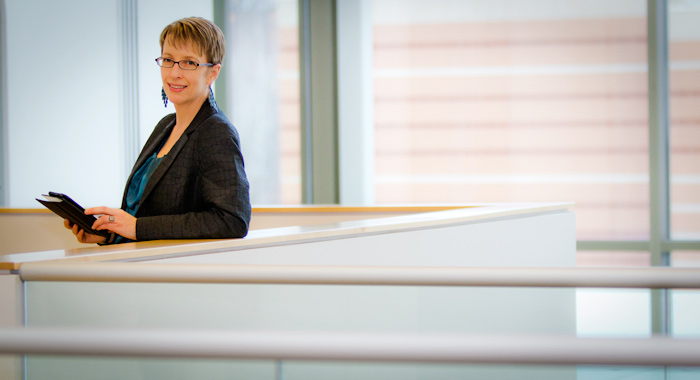New CIO Syncs High Tech and Higher Ed
Vision powered by tech savvy and a passion for higher education have brought Raechelle Clemmons to her new position as St. Norbert’s first chief information officer.
Clemmons, charged with bolstering the college’s IT organization, says, “I felt like there were challenges here, but they were the right kinds of challenges for me.”
Her path to Wisconsin winds through the San Francisco Bay area, where she was working in retail management and marketing during the heady days of high-flying tech start-ups. She says, “I really enjoyed marketing and thought, ‘If I’m going to go anywhere in Silicon Valley, I’ve got to get into high tech.’ ” In 1998 she joined Digital Impact – a company that rocketed from 15 employees when she signed on as marketing communication manager to 200 a year later. Next, she moved to e-marketing start-up NetLine. She found the work exciting but somehow unsatisfying.
“I left high tech in 2004 in part because I really loved what I was doing but just didn’t like where I was doing it anymore,” she says. While taking classes at California State University, East Bay toward a degree in political science, Clemmons applied for a technology projects manager position on campus. She got the job and found her niche. “It was just like I had landed. I already loved what I was doing, and I found an environment that I loved doing it in,” Clemmons says.
She took on growing IT responsibility and, in due course, was selected as a fellow at Emory University’s Frye Leadership Institute, an intensive program for librarians and information technologists. (Library director Kristin Vogel is also a Frye alum.) Five months after completing the program, Clemmons became CIO at Menlo College, spending three years there before coming to St. Norbert.
“I felt like this was such an amazing institution,” she says. “The whole concept of community here – you see it on the website and in the language, but you step foot on this campus and you can’t help but feel it.”
As part of that community, she’s taking steps to improve IT infrastructure and strategy, aligning her team for targeted academic technology support, a more global view of (and support for) administrative systems, and a high-quality and responsive user-support function. Early plans include transitioning the college’s learning management system to the cloud and strategic decision-making in collaboration with a college-wide IT advisory committee.
Her approach stems from her belief that communication and relationship-building foster successful technology organizations. “We’re built like product companies,” she says. “We need to restructure ourselves as service organizations, because it’s really about the use of what we provide, not the actual thing we’re providing.”
March 27, 2013












